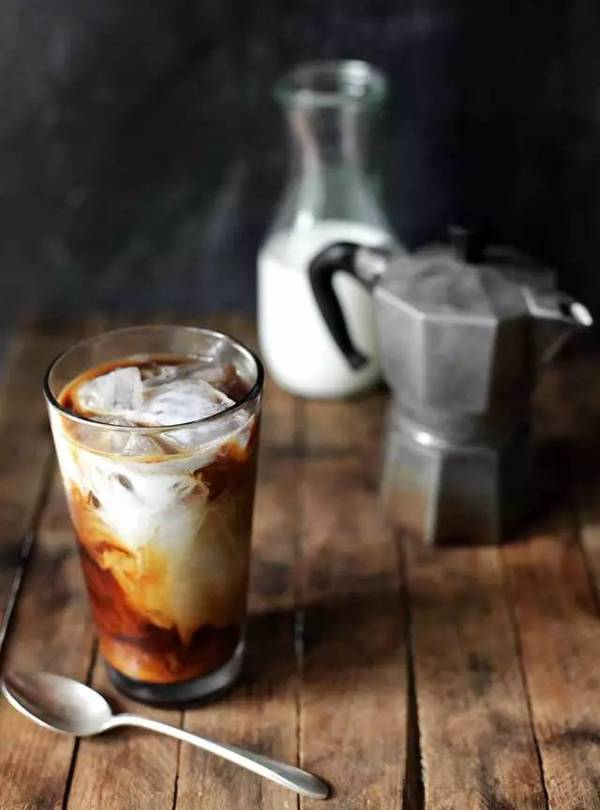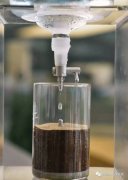Is it good to drink beans in Berman Manor? the planting and processing of single beans in Berman Manor

Professional barista communication, please pay attention to coffee workshop (Weixin Official Accounts cafe_style)
Berman Manor, Kenya
Kenya Kenya
Population: 4,435,300
Central Kenya produces the most coffee beans, and the best coffee beans also come from the central region. Western Kenya is also showing interest in coffee cultivation, such as Kisii, Trans-Nzoia, Keiyo and Marakwetfm regions in Managua.
KIAMBU
Most of the land in this area is occupied by large landowners. But as urbanization expanded, a large number of large landowners found it more profitable to sell their land for urban development than to be a landowner. Coffee beans from this region are named after the place where they are produced, such as Sinka Thinka, Ruiru, Limuru, etc. Many large landowners also run multinational enterprises, so farming focuses on higher yields rather than higher quality. However, there are still a small number of small farmers in this area.
Altitude: 1500-2200m
Harvest: first harvest period: October-December, second harvest period: June-August
Varieties: SL-28, SL-34, Batian
NYERI
The heart of Nyeri is Kenya's volcano (extinct volcano), the lateritic soil of which produces Kenya's best beans, so agriculture is the most important industry in the region, and coffee beans are one of its main cash crops. Nerini is generally a smallholder cooperative compared to large landowners, harvests twice a year, and high-quality beans appear at the main harvest.
Altitude: 1200-2300m
Harvest: first harvest period: October-December, second harvest period: June-August
Breeds: SL-28, SL-34, Ruiru 11, Batian
Kenya borders Ethiopia to the north, where the Arabica coffee tree originated, but coffee cultivation did not begin until the early twentieth century. Missionaries introduced Arabica trees from Yemen in the nineteenth century, but did not plant them in large quantities until 1893, when they introduced the ancient seeds of Bourbon coffee from Brazil. Coffee in Kenya is of Brazilian origin. Due to differences in water, climate and treatment methods, coffee cultivation did not begin on a large scale.
There are two types of coffee farms in Kenya. One is a large plantation covering more than five acres, but the average elevation is lower. For Kenya coffee, the coffee beans of the large farm are only moderate in quality. The best Kenyan beans are produced in small farms, mostly located in the foothills or hillsides above 5,000 or 6,000 feet. Each small farmer can only produce about 20 to 70 bags per season. They cannot afford to invest in expensive washing and treatment plants. However, small farmers are very united. Hundreds or thousands of families set up cooperative farms. The washing and treatment plants are funded by the government. The coffee fruits picked by small farmers are sent to cooperative farms for unified processing. First, the half-ripe or rotten fruits are removed, and then peeled, fermented, The process of breaking down the pulp, removing the beans, drying and polishing is supervised by the official Coffee Authority, which is quite rigorous and ensures the quality of Kenyan coffee. Kenya bean washing processing technology and high standard pipe, has been a model of bean producing countries
Kenya is divided into seven provinces (Province) and one provincial district (Nairobi Province). The province is divided into districts (DISTRICT), townships (DIVISION) and villages (LOCATION). According to the new constitution, the four-tier administrative structure will be changed to two levels: central and county (COUNTY). The 47 districts established under the new Constitution will be fully operational after the 2013 general elections.
The seven provinces are: Central Province, Coast Province, Eastern Province, Nyanza Province, Rift Valley Province, Western Province, North Eastern Province. [3]
capital
Nairobi, with an area of 648 square kilometers, an altitude of 1680 meters and a population of 3 million, is the political, economic, cultural, industrial and transportation center of the country. It has been designated as the capital since 1907 and is one of the international cities in Africa.
Kenya has a total population of 41.8 million (2013) and a population growth rate of 2.7%. There are 42 ethnic groups in the country, mainly Kikuyu (17 per cent), Luhia (14 per cent), Kalenjin (13 per cent), Luo (10 per cent) and Kamba (10 per cent). In addition, there are a small number of Indians, Arabs and Europeans. [5]
Geographic environment editor
location context
Kenya is 5,826,460,000 square kilometres across the equator, bordered by Somalia to the east, Ethiopia and South Sudan to the north, Uganda to the west and Tanzania to the south. It is bordered by the Indian Ocean in the southeast and has a coastline of 536 kilometers. [3]
terrain
The coastal area is flat, and most of the rest is plateau with an average altitude of 1500 meters. the Great Rift Valley
The east branch cuts the plateau vertically from north to south, dividing the plateau into east and west parts. The valley floor of the Great Rift Valley is 450--1000 meters below the plateau and 50--100 kilometers wide. Lakes of varying depths are distributed and many volcanoes stand tall. The northern part is desert and semi-desert zone, accounting for about 56% of the total area of the country. Mount Kenya in the central highlands is 5199 meters above sea level, the highest peak and the second highest peak in Africa, with snow on its summit all year round. Vagaj extinct volcano 4321 meters above sea level.
hydrological
There are many rivers and lakes, the largest of which are the Tana River and the Garana River. The west is bordered by Lake Victoria, Africa's largest lake. [3]
climate
Located in the tropical monsoon zone, most of the region belongs to tropical savanna climate, humid coastal areas, mild plateau climate. 3-6 The rainy season is from October to December, and the rest is dry season. Annual rainfall decreases from 1500 mm to 200 mm from southwest to northeast. The capital Nairobi has a mild climate, with an average annual temperature of 17.7°C and an annual rainfall of 1049 mm. Don't underestimate Kenya's small farmers. They are no different from ants and soldiers. The overall production capacity is higher than that of large farms, about six to four, which is quite rare in bean-producing countries. Kenyan coffee is widely appreciated by connoisseurs, thanks in large part to smallholder farmers who work hard to grow good coffee in the foothills. In addition, Kenya beans must have a strict classification system, washing plant coffee beans, according to size, shape and hardness, divided into seven grades, the highest level is AA or AA+, followed by AB, PB, C, TT, T. This grading system is similar to Colombia, mainly based on particle size and shape considerations, but does not sell the best flavor. This is what coffee fans should know.
Kenyan beans taste very different from Brazilian beans. Brazilian coffee is grown at low altitudes, with soft texture and no obvious fruit acid flavor. Kenyan coffee trees, on the other hand, are concentrated on the slopes near Mount Kenya, between 4,000 feet and 6,500 feet above sea level, which is suitable for coffee bean flavor development, because the mountain temperature is lower, the growth is slower, the aromatic components of coffee beans are fully developed, the fruit acid flavor is more obvious, and the texture is harder. In addition, Kenya was a British colony in the early days, and the British have established a complete system of cultivation and quality control. After Kenya became independent, the coffee industry was on an established basis.
Kenya Coffee Kenya borders Ethiopia to the north, where the Arabica coffee tree originated, but coffee cultivation did not begin until the early twentieth century. Missionaries introduced Arabica trees from Yemen in the nineteenth century, but did not plant them in large quantities until 1893, when they introduced the ancient seeds of Bourbon coffee from Brazil. That is to say, Kenya coffee today has Brazilian ancestry. Due to differences in water, climate and treatment methods, coffee cultivation began on a large scale. Kenya beans have a very different flavor from Brazilian beans. Brazilian coffee is grown at low altitudes, with soft texture and no obvious fruit acid flavor. Kenyan coffee trees, on the other hand, are concentrated on the slopes near Mount Kenya, between 4,000 feet and 6,500 feet above sea level, which is best suited to the development of coffee beans flavor, because the mountain temperature is lower, the growth is slower, the aroma of coffee beans is fully developed, the fruit acid flavor is more obvious, and the texture is harder. In addition, Kenya was a British colony in the early days, and the British have established a complete system of cultivation and quality control. After Kenya's independence, the coffee industry has made great strides on the existing basis and has become Kenya's most foreign exchange earning industry.
The Senate is composed of the President and 68 senators, of whom 47 are elected (one for each county), 16 are women (designated according to the proportion of seats held by political parties in the Senate), 2 are young members (one male and one female), and 2 are members representing persons with disabilities (one male and one female). The President and Deputy President of the Senate are nominated by each party from among its own non-members and members, respectively, and elected by the full Senate. The main functions of the Senate are: representing the interests of the counties and the military government, participating in legislation on county affairs in parliament, considering and passing bills related to county affairs, considering and passing national tax distribution plans in the counties, supervising the financial expenditure of the county government, impeaching the president and vice president, etc. The president of the Senate is Ezulo of the Jubilee League. [5]
government
Presidential system. The Cabinet consists of 26 members, including the President, Vice President, Ministers and Attorney General. The current Cabinet was established in June 2013 and consists of 21 members, including the President, Vice President, Ministers and Attorney General. The Cabinet list is as follows: President Uhuru Kenyatta Uhuru Kenyatta, Vice President William Luto William Ruto, Minister of Interior and Coordination of Central Government Joseph Lenku Joseph Lenku, Minister of Decentralization and Planning Anne Waiguru Anne Waiguru, Minister of Defence Rachel Omomo (female, Raychelle Omamo), Minister for Foreign Affairs Amina Mohammed Amina Mohamed, Minister of Education Jacob Kaymenyi Jacob Kaimenyi, Minister of Finance Henry Rotic Henry Rotich, Minister of Health James Macharia (James Macharia), Minister of Transport and Infrastructure Michael Kamau, Minister of Environment, Water and Natural Resources Judi Wakhungu (female, Judi Wakhungu), Minister of Land, Housing and Urban Development Shariti Ngilu (female, Charity Ngilu), Minister of Information, Communication and Technology Fred Matiang' i, Sports, Hassan Areiro, Minister of Culture and Arts Hassan Arero, Minister of Labour, social protection and services Samwell Cambi Samwel Kambi, Minister of Energy and Petroleum Davis Chilchill Davis Chirchir, Minister of Agriculture, Livestock and Fisheries Felix Koskay Felix Kosgey, Minister of Industrialization and Enterprise Development Adan Mohammed, Minister of East African Affairs, Commerce and Tourism Phyllis Kandie, Minister of Mines Najib Balala and Attorney General Githu Muigai
Important Notice :
前街咖啡 FrontStreet Coffee has moved to new addredd:
FrontStreet Coffee Address: 315,Donghua East Road,GuangZhou
Tel:020 38364473
- Prev

How to deal with the processing of single bean in Incht manor? how to divide the grade of single bean in Incht manor?
For the exchange of professional baristas, please follow the coffee workshop (Wechat official account cafe_style) Incht Manor Guatemala 2016 Incht Manor in Guatemala bidding lots of EL-03 geisha ■ country: ■ production area of Guatemala: La Libertad, Huehuetenango ■ Manor name: Incht El Injerto ■ Coffee name: Pea Blanca Young Gesha C
- Next

Berman Manor single product bean producing area introduces how to brew Berman manor single product beans.
For the exchange of professional baristas, please pay attention to the coffee workshop (Wechat official account cafe_style) Berman Manor in Kenya is located in the tropical monsoon area, most of the area is savanna climate, the coastal areas are hot and humid, the plateau climate is mild. The rainy season is from March to June and from October to December, and the rest is dry season. The annual rainfall decreases from 1500 mm to 200mm from southwest to northeast. Climate in Nairobi, the capital
Related
- Does Rose Summer choose Blue, Green or Red? Detailed explanation of Rose Summer Coffee plots and Classification in Panamanian Jade Manor
- What is the difference between the origin, producing area, processing plant, cooperative and manor of coffee beans?
- How fine does the espresso powder fit? how to grind the espresso?
- Sca coffee roasting degree color card coffee roasting degree 8 roasting color values what do you mean?
- The practice of lattes: how to make lattes at home
- Introduction to Indonesian Fine Coffee beans-- Java Coffee producing area of Indonesian Arabica Coffee
- How much will the flavor of light and medium roasted rose summer be expressed? What baking level is rose summer suitable for?
- Introduction to the characteristics of washing, sun-drying or wet-planing coffee commonly used in Mantenin, Indonesia
- Price characteristics of Arabica Coffee Bean Starbucks introduction to Manning Coffee Bean Taste producing area Variety Manor
- What is the authentic Yega flavor? What are the flavor characteristics of the really excellent Yejasuffi coffee beans?

